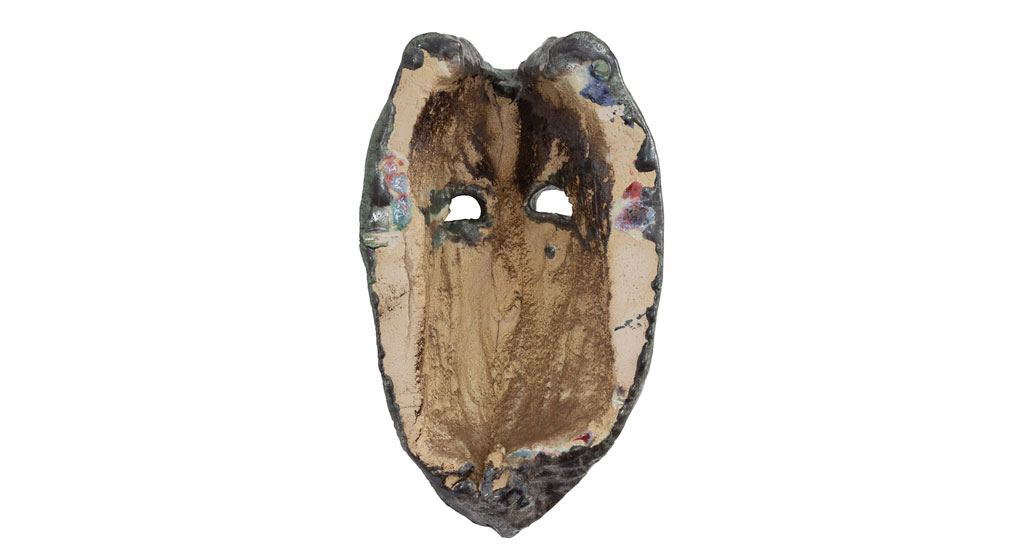ART CITIES:Brussels-Cameron Jamie
 Cameron Jamie has produced work in diverse media from photographs and videos to drawings, ceramics, sculpture, and photocopied zines. The work that brought him the widest attention in the early years of his career, however, was Kranky Klaus (2002-03), a video documenting the Alpine Christmas tradition of Krampuslauf. In a rural Austrian village, men dressed as horned beasts maraud through the streets at night, supposedly in search of children and young women who are said to have been naughty. The Krampus beasts then physically assault their victims in what is a culturally sanctioned ritual of choreographed (though apparently real) violence.
Cameron Jamie has produced work in diverse media from photographs and videos to drawings, ceramics, sculpture, and photocopied zines. The work that brought him the widest attention in the early years of his career, however, was Kranky Klaus (2002-03), a video documenting the Alpine Christmas tradition of Krampuslauf. In a rural Austrian village, men dressed as horned beasts maraud through the streets at night, supposedly in search of children and young women who are said to have been naughty. The Krampus beasts then physically assault their victims in what is a culturally sanctioned ritual of choreographed (though apparently real) violence.
By Efi Michalarou
Photo: Gladstone Gallery Archive
Cameron Jamie in his solo exhibition at Gladstone Gallery debuts a new series of ceramic masks that both foreground his intervention into the traditional practice of the medium and continue his longstanding investigation of the mask as form, including its various cultural antecedents and its performative potential in ritual. Jamie’s fascination with the mask over the course of the past three decades can be discerned from his earliest works and draws from a variety of sources such as wrestling subcultures, the continually recycled pagan tropes of Halloween celebrations, and the folk rituals and traditions of various regions in Central Europe. He has continued to examining mask-making in a variety of materials, as in the large installation of eleven carved wooden masks making up “Smiling Disease” (2008) and a series of inverted ceramic masks, bodies of work that were both recently exhibited at the 2019 Venice Biennale. For this new body of work, Jamie has created a rogues’ gallery of ceramic masks, some mounted traditionally to confront the viewer, while others are turned to the wall to reveal their undersides. Through a multistage process of repeated firing and glazing, each work is coated with an animated surface pattern of lava-like patinas with spectacular complexity and richness. Brightly colored and heavily textured with protrusions and surface markings, Jamie’s masks relate abstractly to humanoid facial expressions and attributes. Often recalling tropes of mysterious folkloric figures, these works simultaneously suggest mounted hunters’ trophies and the possibilities of assuming a different persona. Since 2015, Jamie has been experimenting with hanging his ceramic masks toward the wall, subverting expectations by negating a clear frontal view. While the traditional function of the mask is to disguise the identity of its wearer for the purposes of ritual, these backwards masks instead expose what is usually hidden. They allow the viewer to psychically inhabit the disguise, taking on a potentially new persona or soul for the self. Revealing the mask’s interior structure not only confounds the viewers’ initial expectations, but also refocuses their attention from external appearances toward a more enigmatic interiority, essentially functioning as a metonym for every individual’s psychological malleability. In his prolonged exploration of the mask’s form and function, Jamie elucidates how persona and performance are not only slippery constructs of social factors, but also aesthetic postures of being.
Info: Gladstone Gallery, 12 Rue du Grand Cerf, Brussels, Duration: 22/1-7/3/20, Day & Hours: Tue-Fri 10:00-18:00, Sat 12:00-18:00, www.gladstonegallery.com
